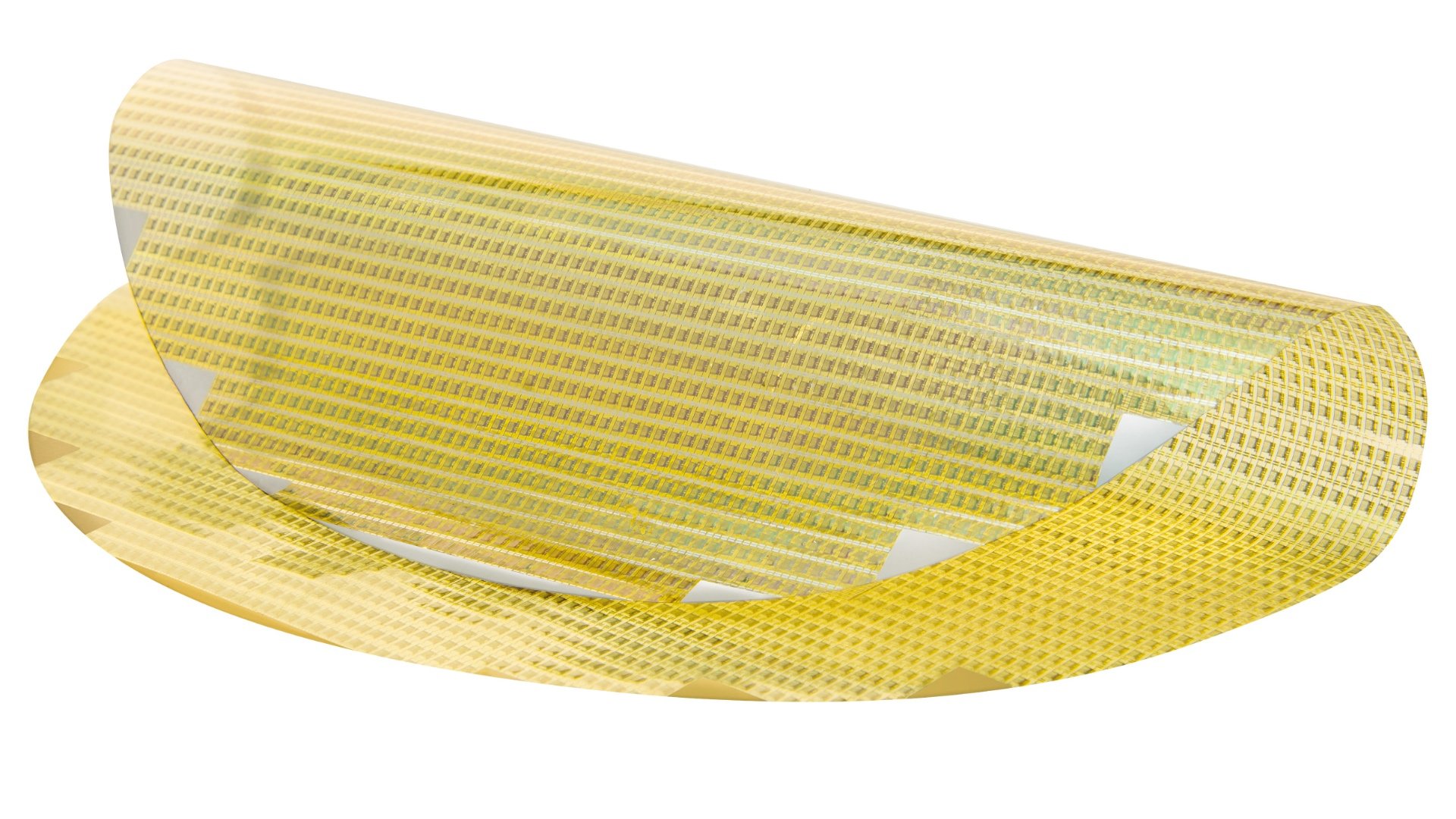
Chip designer ARM has created the prototype of a new plastic-based, flexible microchip that could end up absolutely everywhere — if we can make enough of them.
As you will be painfully aware by now if you’re tried to buy anything from a games console to a graphics card to a new camera, we’re in the middle of a microchip shortage. And if you thought the current situation was bad, if Cambridge-based chip designer Arm is right about the demand for its new plastic-based flexible chip — even if it’s several orders of magnitude off — the squeeze on production capacity is going to be immense.
Developed by ARM in conjunction with flexible electronics maker PragmatIC, the new PlasticARM, as its being called, first saw light of day on 27 October last year, some eight years after the two companies began to explore the feasibility of creating a fully flexible chip.
That length of dev time indicates some of the complexity to all of this. It took them down some entertaining paths too, including the ‘e-nose’ PlasticARMPit project designed to detect the odours of spoiling food, amongst other things. But the key breakthrough was the development of PragmatIC’s FlexLogIC manufacturing system a couple of years ago. Add this to the work already done on the e-nose project, which uses the same cell library, tool flow and process technology, and the time was ripe for ushering in the new era of flexible chips.
PlasticARM is an extremely minimalist Cortex-M0-based SoC, with just 128 bytes of RAM and 456 bytes of ROM — all of which sounds fairly rudimentary. But Arm insists its 18,000 logic gates make it 12x the complexity of any previous flexible microprocessor.
As the company explains, flexible electronic devices use thin film semiconductor materials such as organics, metal oxides or amorphous silicon, and offer a number of advantages over normal silicon. These include thinness, conformability, and low manufacturing costs. As a result, thin-film transistors (TFTs) can be fabricated on flexible substrates such as paper, foil or plastic at a significantly lower processing cost than conventional transistors fabricated on crystalline silicon wafers.
The Internet of Everything
This makes it possible to print them really cheaply on pretty much anything. Want to know what’s in your fridge? It will tell you and, in a nod to the e-nose, also tell you if it’s about to go off. Indeed, in a paper in Nature that details the process behind the chip, the researchers talk about the “integration of more than a trillion inanimate objects over the next decade into the digital world.”
A trillion is a 1 with 12 zeroes after it (on the short scale at least). This isn’t the Internet of Things, this is the Internet of Everything.
However, it’s probably worth throttling back on some of the expectations surrounding this just for the moment. First, the working chip has to date only run three test programs that were hardwired into the ROM before fabrication. Second it’s on the (comparatively) sizeable size, occupying a shade under 60mm2, which is somewhere in the region of 1500x its silicon equivalent (though even at that unoptimised size you can fit 10 of them in a square inch, if you’ll forgive the mixing and matching of metric and imperial units). And third it’s not energy efficient at all.
You also have to be able to make them too.
But if we can scale up production, little of that matters in the end. Fast, programmable, powerful, and small are great but so is cheap, cheerful, and ubiquitous. It’s early days, but as ARM states itself with only a hint of hyperbole, the impact of all this could be beyond significant.
Tags: Technology computing microchip Arm


Comments